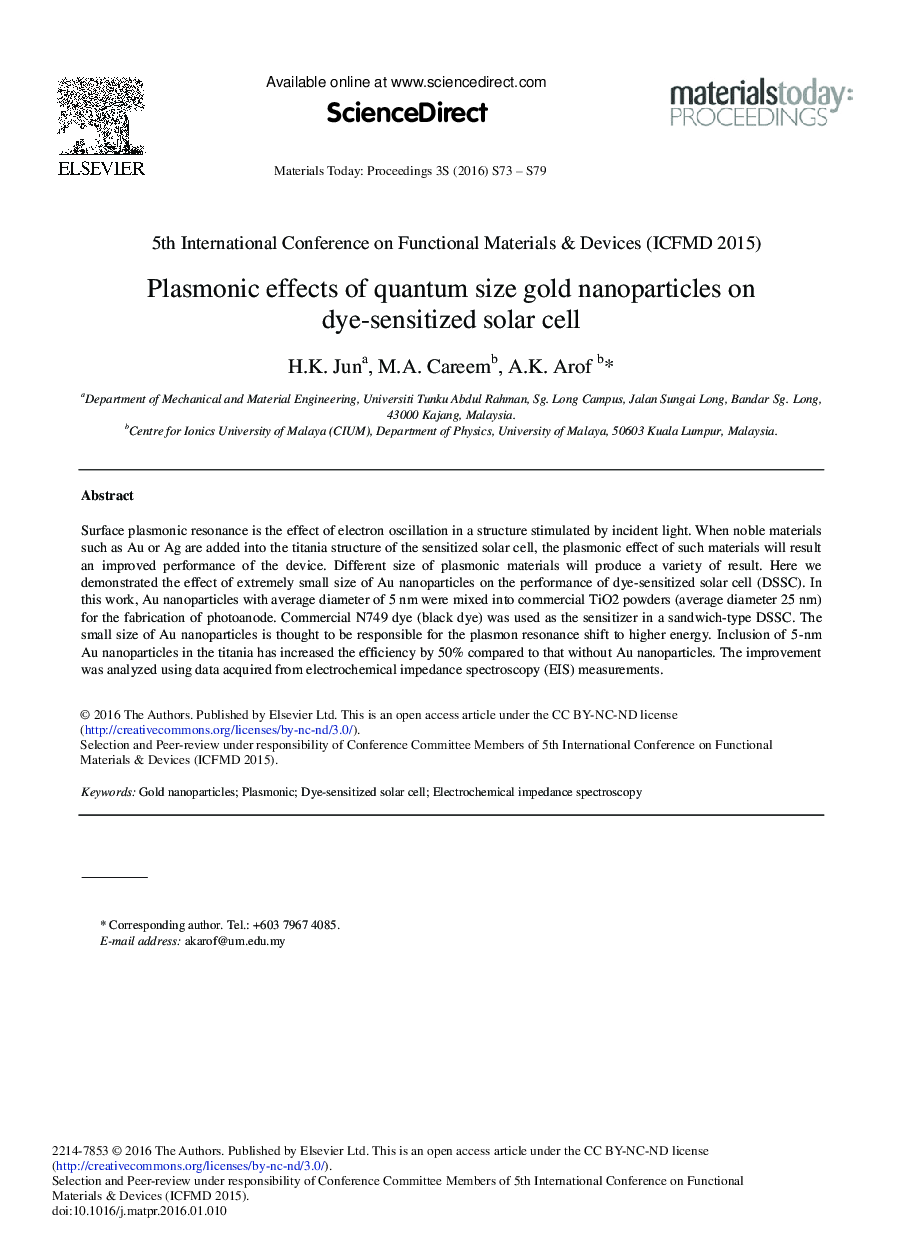| Article ID | Journal | Published Year | Pages | File Type |
|---|---|---|---|---|
| 1630971 | Materials Today: Proceedings | 2016 | 7 Pages |
Surface plasmonic resonance is the effect of electron oscillation in a structure stimulated by incident light. When noble materials such as Au or Ag are added into the titania structure of the sensitized solar cell, the plasmonic effect of such materials will result an improved performance of the device. Different size of plasmonic materials will produce a variety of result. Here we demonstrated the effect of extremely small size of Au nanoparticles on the performance of dye-sensitized solar cell (DSSC). In this work, Au nanoparticles with average diameter of 5 nm were mixed into commercial TiO2 powders (average diameter 25 nm) for the fabrication of photoanode. Commercial N749 dye (black dye) was used as the sensitizer in a sandwich-type DSSC. The small size of Au nanoparticles is thought to be responsible for the plasmon resonance shift to higher energy. Inclusion of 5-nm Au nanoparticles in the titania has increased the efficiency by 50% compared to that without Au nanoparticles. The improvement was analyzed using data acquired from electrochemical impedance spectroscopy (EIS) measurements.
